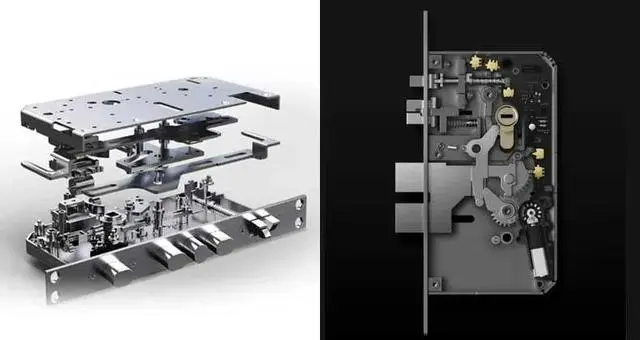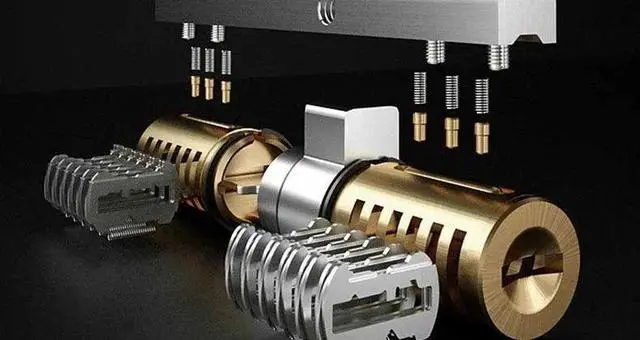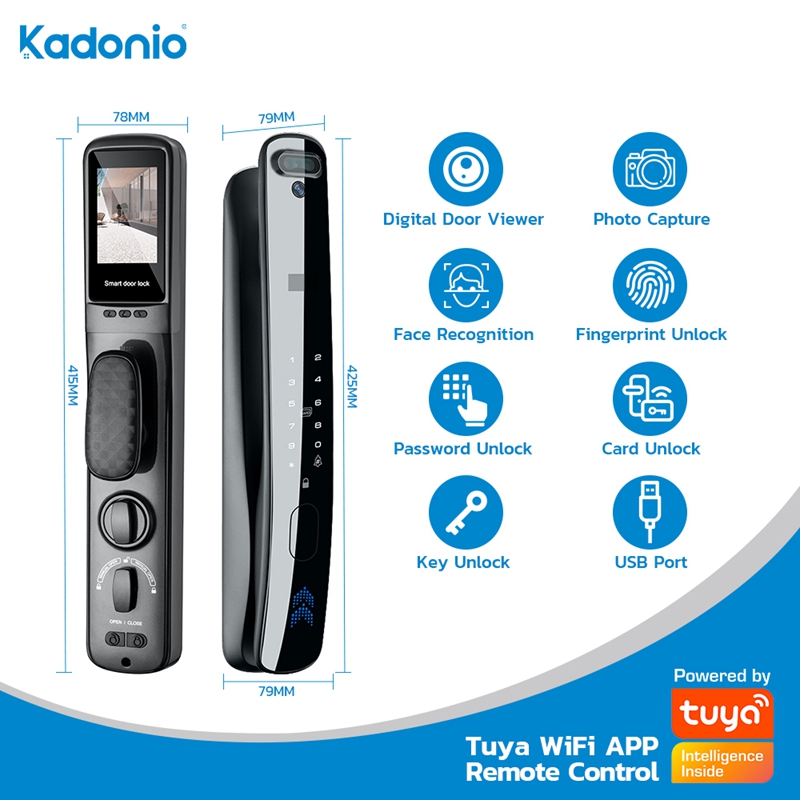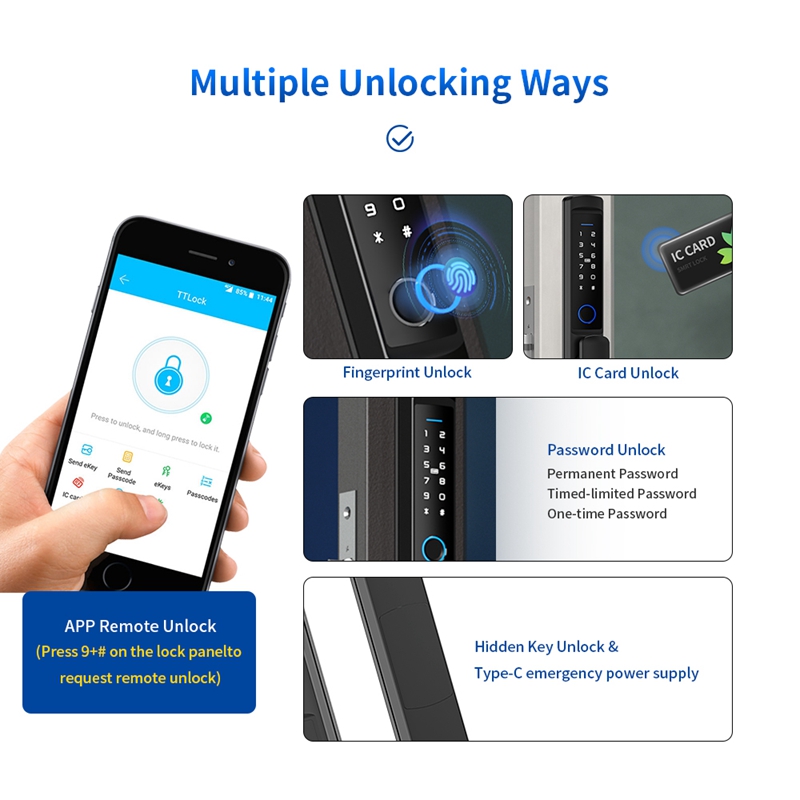Choosing the right smart door lock can greatly enhance the security and convenience of your home. These locks utilize intelligent technologies such as fingerprint recognition, password entry, card access, and facial recognition to provide advanced access control compared to traditional mechanical locks. With numerous brands and models available on the market, it’s important to consider several factors when selecting the most suitable smart home locks. This article will guide you through the following aspects of smart locks purchase:
1. Lock Body: Smart home door locks come with either electronic or mechanical lock bodies.
❶ Electronic lock bodies control both the latch and cylinder electronically, while mechanical lock bodies have the latch controlled electronically and the cylinder controlled mechanically. Electronic lock bodies offer fast unlocking, door status feedback, and are slightly more expensive, usually found in high-end smart digital locks.
❷ Mechanical lock bodies provide stability and reliability, with a slightly slower unlocking speed. There are conventional lock bodies and gear lock bodies available. Gear lock bodies are less prone to jamming and offer increased stability. Pay attention to the materials as well, with options like galvanized steel and stainless steel lock bodies. Stainless steel lock bodies are theoretically more durable. The mechanical lock body and the smart lock itself are separate entities, with the latch controlled electronically and the cylinder controlled mechanically, ensuring both security and convenience.
2. Cylinder Grade:
The lock cylinder is the core component of a keyless entry door locks and determines its security level. Cylinder grades range from A, B, to C, with C-grade cylinders providing the highest security. They include built-in drill resistance and possess strong resistance against lock picking, requiring more than four hours even for professional locksmiths to bypass. B-grade cylinders offer weaker anti-burglary capabilities, while A-grade cylinders are vulnerable to tool-assisted unlocking. Therefore, it is recommended to choose a smart digital door lock with a C-grade cylinder to ensure the safety of your property.
3. Unlocking Methods:
Smart locks offer various unlocking methods to suit individual preferences and requirements. These include fingerprint recognition, password entry, facial recognition, card access, mobile app control, and emergency key access. Each method has its advantages and disadvantages, and your choice should be based on your specific needs.
❶ Fingerprint recognition is convenient and quick but can be affected by factors such as wet or injured fingers. Modern fingerprint locks use semiconductor fingerprint sensors, which only recognize live fingerprints, ensuring security against fake fingerprint replicas.
❷ Password entry is simple and widely supported, with the added feature of virtual passwords on most smart locks. You can enter any number of additional digits before or after the correct password, as long as the correct password is among them. Similar to fingerprint recognition, password entry is a vital unlocking method for smart locks. It is especially useful when fingerprint recognition fails or when providing temporary passwords for family and friends.
❸ Facial recognition provides a high-tech experience and is available in three main technologies:
Binocular vision: This method captures facial images using two cameras and calculates facial depth information through algorithms, enabling 3D facial recognition. It is the most common and mature technology used in most smart locks, offering a good balance of price and performance.
3D structured light: By projecting a series of infrared dots onto the user’s face and capturing the reflected dots with a camera, this method generates a 3D model of the face, achieving high-precision facial recognition. High-end smart locks mostly adopt 3D structured light technology, which provides advantages such as high accuracy, speed, and low power consumption.
Time of Flight (ToF): This technology emits infrared light and measures the time it takes for the light to return, calculating the distance information of the user’s face and generating a 3D point cloud image for facial recognition. ToF facial recognition is more commonly used in smartphone facial recognition but has yet to be widely adopted in smart locks.
❹ Card access offers convenience similar to swiping a transit card, but it may be considered redundant for residential smart locks. However, it is highly convenient for hotels, apartments, and offices.
❺ Mobile app control enables remote access and provides additional features such as voice control, video monitoring, and remote unlocking. With a dedicated app, you can receive popup voice notifications when someone rings the doorbell. Combined with the use of mini-programs, you can effectively manage both work and personal life while receiving timely feedback on the lock’s status.
❻ Emergency key access provides the traditional and reliable method of using a physical key, either carried with you or stored in a secure location. This method is typically used only when the lock has run out of power. Choosing a smart lock with built-in anti-theft alarm functionality is recommended, as it immediately alerts the homeowner and neighbors in the event of unauthorized attempts to unlock the door.
When it comes to smart locks, which directly relate to home security, it is crucial to choose a reputable and trustworthy brand. With numerous brands and diverse functionalities and unlocking methods available, you can select the most suitable biometric door lock based on your specific requirements. If you have any questions, feel free to consult the customer service personnel, who will assist you throughout the process, answering any inquiries you may have.
Post time: Jun-26-2023








